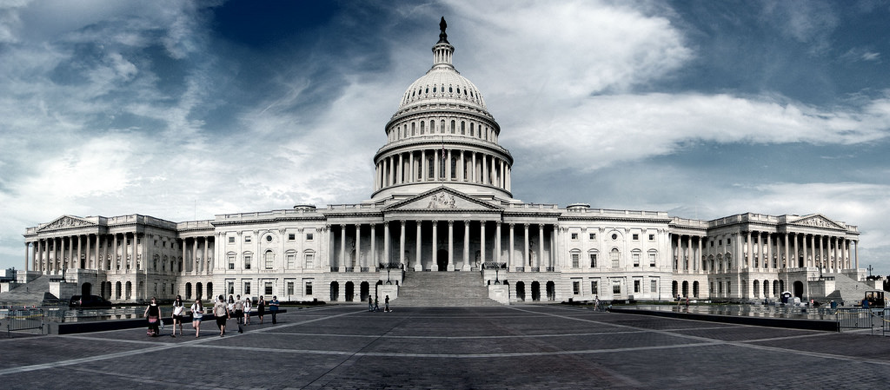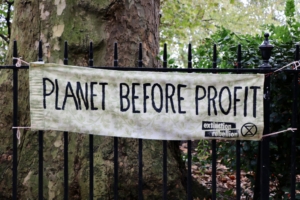Hill Fights, Playground Trouble, and The Glass-Steagall Myth
Here’s What You Need To Know
This week the negotiations over the potential government shutdown is dominating the news from Capitol Hill. Most people know that debt ceiling and FY 2018 fights loom in the summer and fall, but several other key legislative items that are being largely ignored could present trouble down the road. In the coming months, Congress will have to reauthorize several measures that impact major industries. Each of these measures could become the next big fight on the Hill that distracts from key priorities like healthcare and tax reform.
- FAA Reauthorization: The House Transportation and Infrastructure Committee will have to finalize the measure reauthorizing the Federal Aviation Administration’s (FAA) authority by August recess, a goal they do not see as problematic. However, talks have just begun over potential new consumer protection elements to be added into the bill in the wake of the United passenger removal fiasco. Last year’s efforts for a long term reauthorization were stymied over a proposal to spin off air traffic control from the federal government into a nonprofit, nongovernmental organization. The same proposal is set to be included in this year’s reauthorization bill, but the move will now have the backing of the President. Whether or not that is enough to secure the necessary votes for the idea remains to be seen, and could present a potential stumbling point for the upcoming must-pass legislation critical for keeping the flying public up in the air.
- CHIP: The Children’s Health Insurance Program (CHIP) will need to be reauthorized by Congress no later than September 2017. The CHIP program itself has proven controversial in the past and, since it is packaged within the Medicare Access and CHIP Reauthorization Act, it has the potential to be even more controversial this year. HHS Secretary Tom Price has already expressed a desire to overhaul the Medicare payment system to make it easier for small and rural physicians. Debate over Price’s yet-to-be-released plan for altering Medicare could leave CHIP reauthorization as collateral damage. CHIP reauthorization may also be especially vulnerable to having controversial riders attached to it this year because GOP lawmakers and the White House have not yet been able to address healthcare reform. If it has still not been addressed by the fall, lawmakers may see the legislation as an opportunity to take action on the issue of healthcare to combat critics back home who say they have not done enough.
- FDA User Fees: Earlier this month top Democrats and Republicans announced a tentative deal to extend funding on several programs related to the approval of new drugs and medical services, including FDA user fees. These fee agreements allow the FDA to collect fees from drugs and medical device makers and fund a significant portion of the FDA’s budget. Should the current user fee agreements expire in September, the FDA would be forced to lay off more than 5,000 employees. However, Congressional leaders hope to have a deal completed before the August recess. Lawmakers have floated ideas about adding new policies in the reauthorization that could derail this preliminary agreement, but at the moment the measure is clear of all extraneous proposals. Senate Health, Education, Labor and Pensions Committee Chairman Lamar Alexander (R-TN) has made it clear that he wants this effort concluded as soon as possible and will fight to avoid any efforts that might make the bill controversial and thus stall its swift approval. While it appears unlikely anyone will be able to derail this preliminary agreement, just as with CHIP reauthorization, the ongoing debate over healthcare reform could lead to last minute obstacles.
News You Can Use
WHAT DO PLAYGROUNDS HAVE TO DO WITH VOUCHERS?
Last week, the U.S. Supreme Court appeared unconvinced by the State of Missouri’s arguments that they could bar a church from receiving state funds as part of a playground resurfacing program. Justices Elena Kagan and Samuel Alito asked the lawyers representing the state sharp questions that suggested skepticism of their argument. The state of Missouri claimed an arcane, anti-Catholic law from the 1800s justified their denial of state funding for the church’s playground resurfacing as part of a government program to reimburse schools and groups looking to replace hard surfaces with much safer rubber tire mulch on their playgrounds.
Subscribe to Receive Insights
"*" indicates required fields
Progressive groups objected to the church’s case out of fear that any acknowledgment of government neutrality toward religion could undermine future Supreme Court arguments against public vouchers for religious schools. The Court’s final opinion on the case has yet to be drafted, but its outcome could indicate where the Court stands on whether governments should provide religious institutions with the same access to certain programs available to other charities and institutions.
THE PRICE IS RIGHT
The age of online retail has created an unparalleled ability for consumers to comparison shop. Now, retailers are responding with attempts to use social science data to determine exactly the right price for any given product at any given moment. Major online sellers, most notably Amazon, have begun aggressively recruiting economists to help build algorithms geared toward determining the exact amount an individual buyer is willing to pay for a product at a specific moment. This means everything from the buyer’s online spending habits, the season, or even the weather could impact the price of any product at any time.
While these efforts are another indication of a global shift toward data-driven strategies, they also present a potential for charges of discrimination and other legislative, regulatory, or litigation action. If this strategy is played out and prices vary between customers, it is possible a customer who was charged more feels that they have been discriminated against because of their gender, race, location, et cetera. Not only will this spur regulatory intervention, but it could damage the reputation of the retailer accused of the discrimination.
THE POPULATION BOMB THAT NEVER WAS
As countless articles appeared outlining doomsday predictions about the state of the environment in honor of Earth Day, senior contributor to The Federalist Daniel Payne published an op-ed highlighting the how many of these predictions struggle to learn from the past and offer a far too pessimistic assessment of humans’ ability to offer solutions to seemingly insurmountable problems. Payne specifically cites the example of Paul Ehrlich’s 1968 book “The Population Bomb,” which predicted that during the 1970s and 1980s the world would suffer from mass famine and starvation due to overpopulation.
In reality, the period marked an abundance of food and continued population growth thanks largely in part to the agriculture industry’s innovation driven by increased market demand. Since the failure of his original prediction, Ehrlich has continued to predict oncoming famines and pushed back the timeline repeatedly whenever reality failed to match his grim prophecies. Ehrlich’s example demonstrates the perils of the negative outlook offered by environmental alarmists who fail to take into account the potential for innovative solutions they cannot yet imagine because the market has not yet created them.
THE GLASS-STEAGALL MYTH
Ever since the 2008 financial crisis, there have been calls for reinstating the 1933 Glass-Steagall Act, which required a separation of investment banks and commercial banks. With reports that President Trump’s powerful head of the National Economic Council, Gary Cohn, is open to the idea, and a bipartisan group of Senators formulating legislation that would bring back key elements of the depression-era law, The New York Times’ William Cohan recently outlined precisely why it is not the solution to the issues presented in the financial crisis.
Cohan argues it was primarily what were thought of as pure investment banks – namely Bear Stearns, Lehman Brothers, Merrill Lynch, and Morgan Stanley – who created the issues of the 2008 market collapse. Glass-Steagall would have actually prohibited JPMorgan Chase and Bank of America from rescuing Bear Stearns and Merrill Lynch respectively. Cohan argues that the problems that plague Wall Street are not about the size of the banks or concentration of their assets, but about the misaligned incentives that encourage bankers to take huge risks with other people’s money. While others disagree, Cohan believes a return to Glass-Steagall does nothing about this; so despite sound bites about breaking up the big banks – doing so might achieve very little in terms of changing Wall Street.
PENTAGON’S ‘BUY AMERICAN’ ISSUE
As President Trump seeks to strengthen the ‘buy American’ requirements for the U.S. government, some Pentagon procurement officials have expressed concerns over how those constraints might impact their ability to always purchase the best technology. This issue has long been debated, but many on both sides of the aisle argue that forcing the Pentagon to buy American limits the Defense Department’s ability to get the best technology to American warfighters in the fastest, cheapest manner. Obviously buying American helps support the American economy, but the Administration may have to make tough decisions about priorities when it comes to tightening buy American provisions, expanding the military, and cutting spending.



